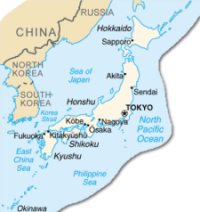

According to election law, prefectural constituencies are ensured a minimum of one representative.The remaining mem- bers are elected by proportional representation in prefectural constituencies, in the former case, or from a single nationwide electoral district, in the latter (House of Representatives 2014). A majority of the members of the Diet, that is, 300 members of the House of Representatives and 146 members of the House of Councillors, are elected in multiple-seat constituencies.

Members of both houses are elected according to a supplementary member system or mixed member majoritarian system (House of Councillors n.d.). Japan's legislative organ is the bicameral Diet, consisting of a House of Councillors and a House of Representatives.GUARANTEES OF REPRESENTATION IN THE CENTRAL GOVERNMENT OR ON CONSTITUTIONAL COURTS The Burakumin have no language of their own.ģ.The prefecture has also adopted some ‘covert language planning’ initiatives over the past ten years-intended to encourage changes in language behavior without explicitly resisting the central state’s objectives (Heinrich and Ishihara 2018)-which are discussed in section 4. The Council for Restoration of the Okinawa Dialects was created in 2000 and is working to establish a standard orthography for a variety of Ryukyuan languages that cannot be accurately represented using Japanese characters (Heinrich 2004). Recently, attempts have been made to revitalize the Ryukyuan languages: many research centres and organizations were established in past decades, and the preservation of the languages has become Okinawa Prefecture’s policy.Since the annexation of the Ryukyuan islands by Japan in 1872, language planning activities deliberately promoted Japanese as the sole state language, and few people born after 1950 are fluent in a Ryukyuan language.They tend to be presented as dialects of Japanese-a portrayal that is considered to be political rather than linguistic (Gottlieb 2005). The Ryukyuan languages are similar to, but distinct from, Japanese.Japanese is the only official language of the state, and more than 99 percent of the population of Japan is said to speak it as their first language.OFFICIAL LANGUAGE STATUS, EITHER IN THE REGION OR NATIONALLY The Burakumin are widely dispersed on the Japanese territory and have no form of territorial autonomy.Ģ.Most government expenditure takes place at the regional or local level, but the prefectural government is dependent on money transferred from the central government and is very limited in its autonomy with regard to spending (Inoguchi 2007).The Ryukyuan minority is concentrated in the Okinawa prefecture, a group of islands in the south of the country.It is composed of 47 prefectures, each overseen by an elected governor, which are responsible for the implementation of some governmental policies. Japan has been a unitary country since the adoption of its constitution in 1946.FEDERAL OR QUASI-FEDERAL TERRITORIAL AUTONOMY Two main groups can be described as national minorities in Japan: the Ryukyuan people, concentrated in the Ryukyuan Islands in Okinawa and Kagoshima prefectures, with a population of nearly 1.5 million (approximately 1.2 per cent of Japan’s population) and the Burakumins, historically segregated on the basis of their caste rather than ethnicity, with an estimated population of 2 to 3 million (1.6–2.4 per cent of the population).ġ.


 0 kommentar(er)
0 kommentar(er)
